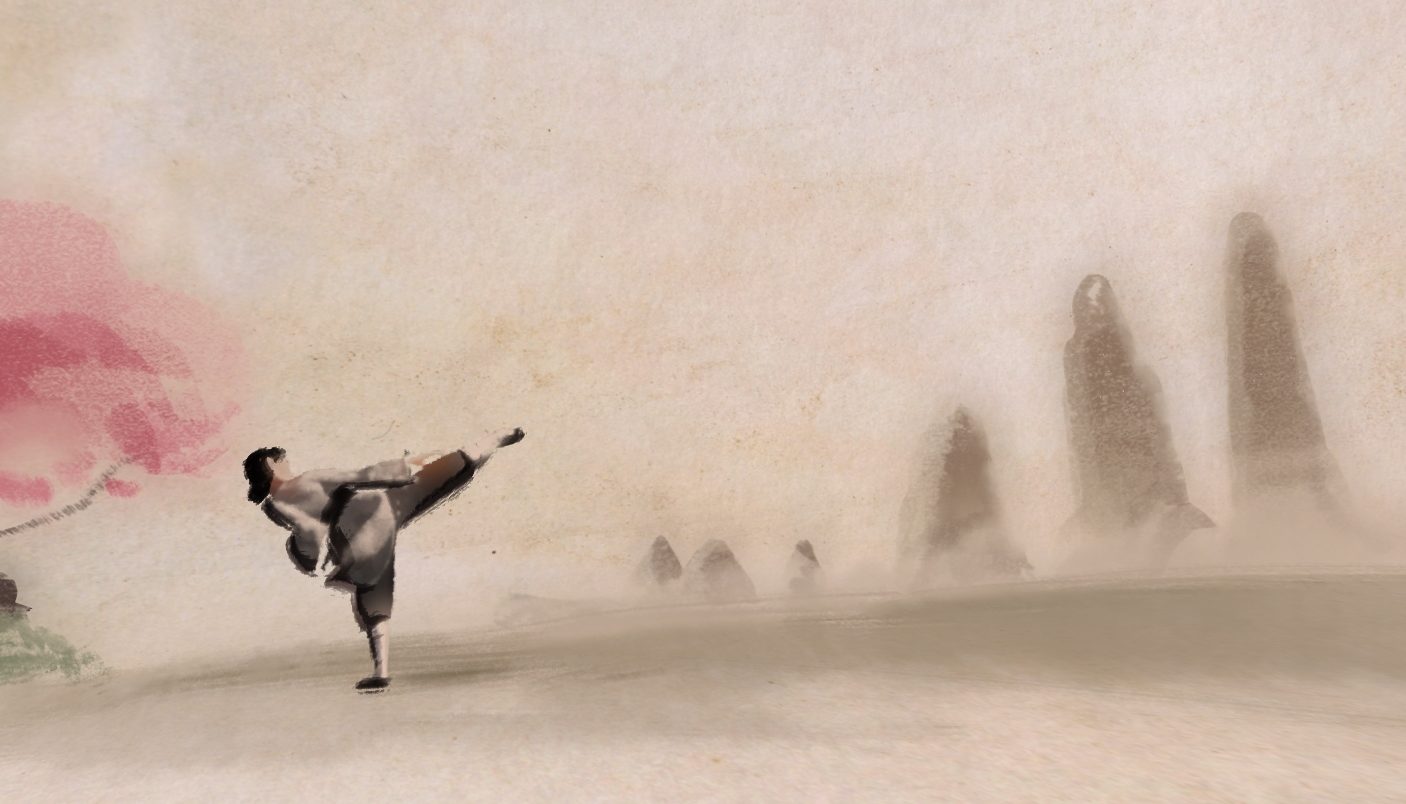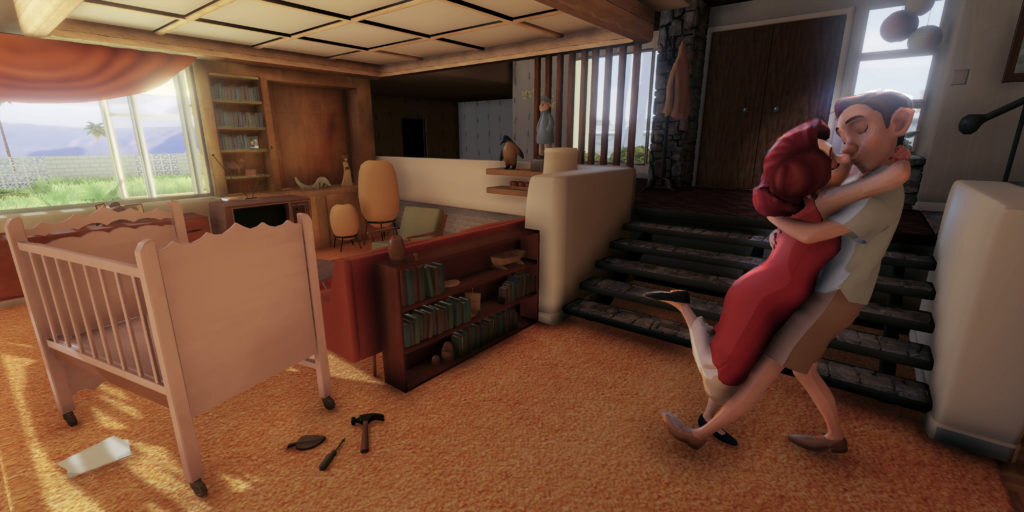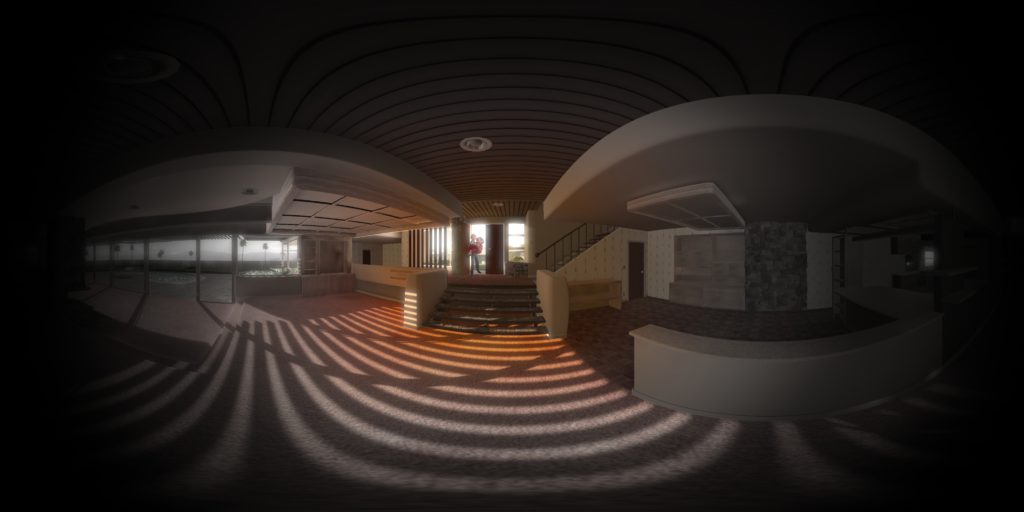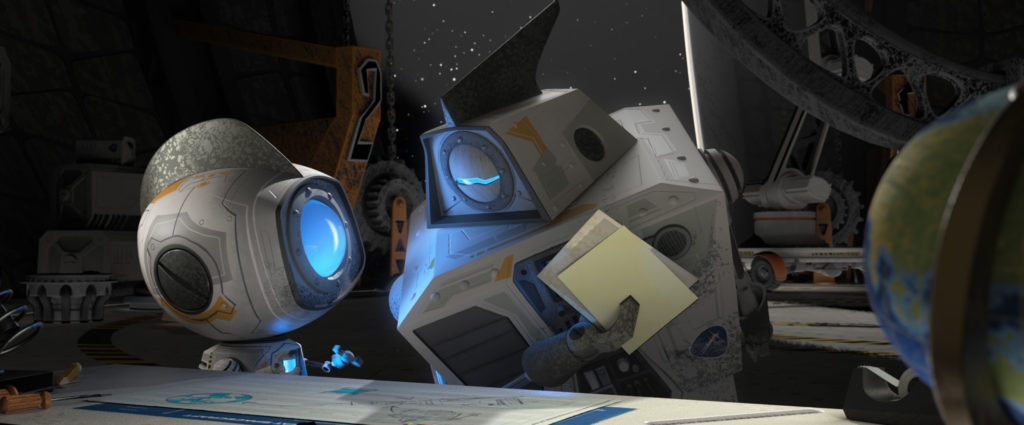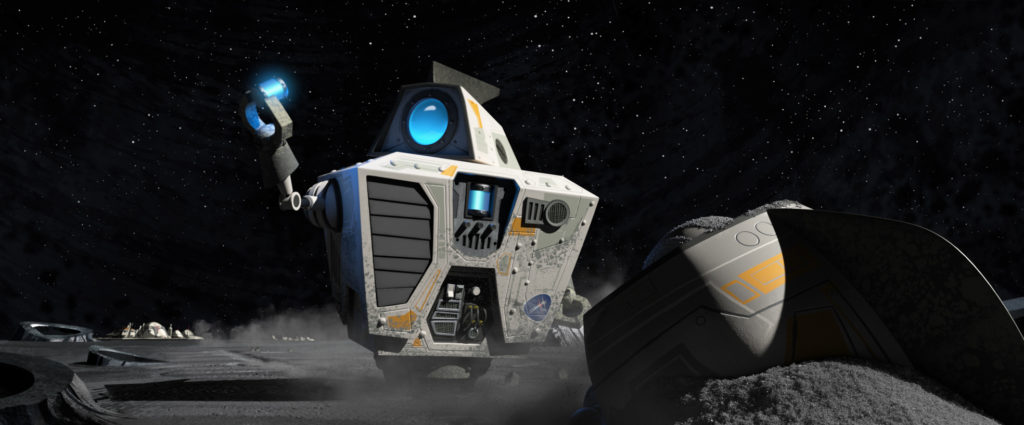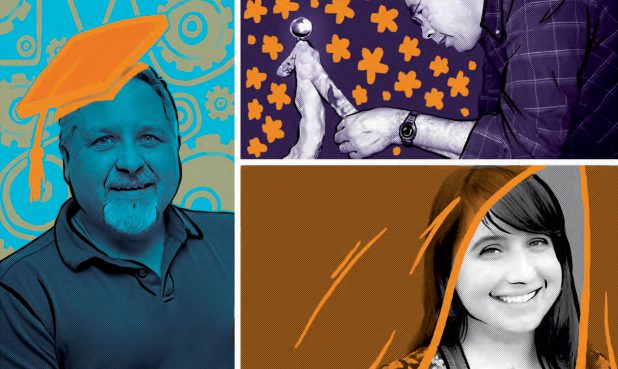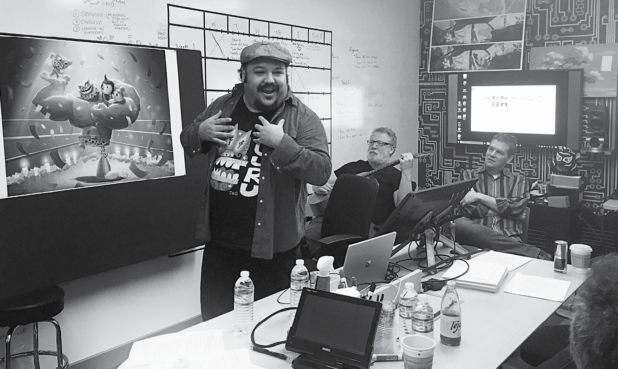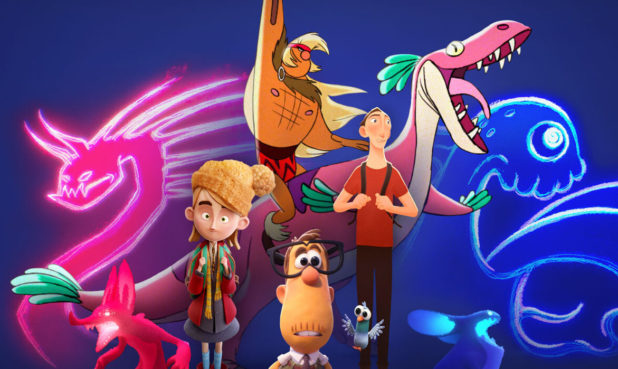Many studios have reinvigorated their shorts programs in recent years. And for good reason. Beyond offering a relatively low-cost laboratory to experiment with new techniques, they invite discovery of diverse artistic voices and foster talent by giving promising filmmakers a chance to tell new kinds of stories in new ways.
These days, artists and writers are finding increasing opportunities to produce original concepts in short format at studios such as Disney, DreamWorks Animation, Cartoon Network, Sony Pictures Animation, and Nickelodeon. Whether launching a new shorts program, redesigning an outmoded program, or redirecting resources to boost an existing program, studios are seeing great symbiotic benefits in the investments. Among other things, the fresh infusion of ideas is helping them navigate the Wild West nature of the current digital landscape.
“Artists and creators do have more freedom, but we aren’t sure what the viewers are going to want, so the studios are all willing to try new things,” says Paula Spence (Close Enough, Flapjack), Art Director for Cartoon Network’s shorts program and Recording Secretary for The Animation Guild. “We are opening our minds, and we’re having to think differently to compete with everybody else.”
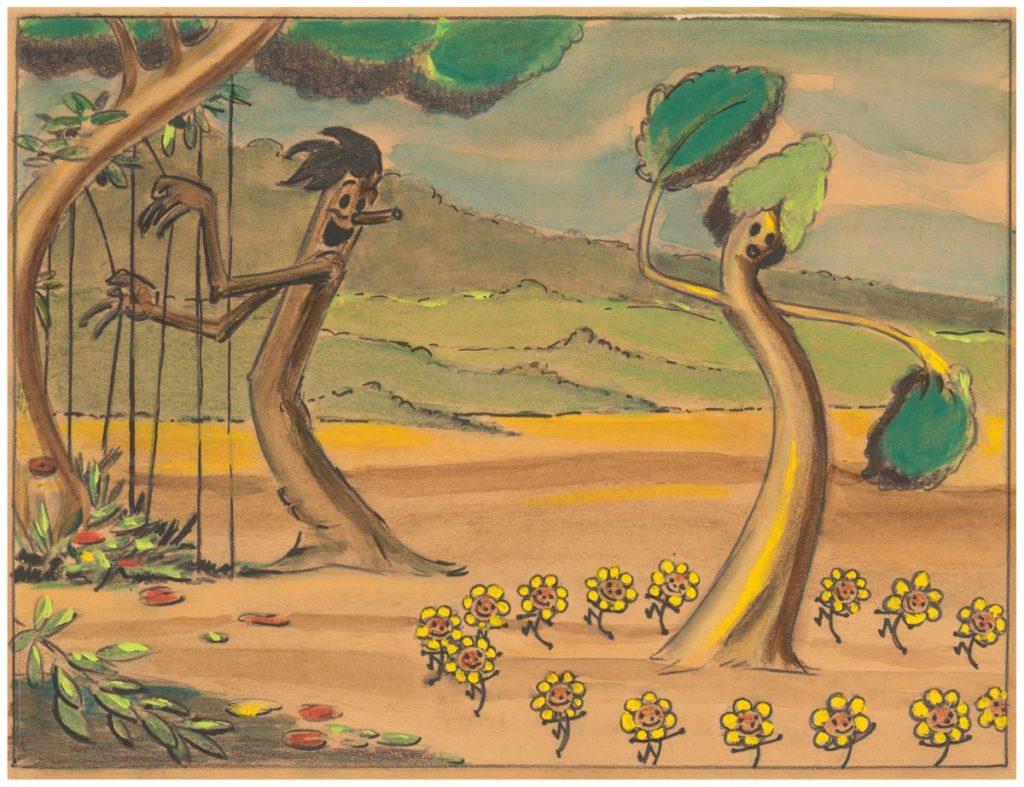
“They’re all quickly trying to build up their slates and using the shorts programs as a tool has been really successful,” says Kari Kim, Vice President of Originals Development at Nickelodeon Animation, which launched its Intergalactic Shorts Program in June 2019. “It’s been a beloved legacy at Nick, but we wanted to take a creative palette and nontraditional delivery channels multiplied.
“Once Pixar came along, everyone saw the value in shorts and testing tech,” says story artist Andrew Erekson (How to Train Your Dragon: The Hidden World), Director of the recent DreamWorks Animation short Marooned. “There are many benefits from doing the shorts program: finding new look at the power of shorts.”
As an art form, animated film shorts stretch back to the late nineteenth century (one could argue that the medium really originated on cave walls 40,000 years ago), and the Academy began recognizing their value as early as its fifth Oscars ceremony in the 1930s. Disney’s pioneering work in the medium led to more widespread use by Warner Bros. and other independent production entities in the television age, but once shorts were no longer packaged with features and attached to newsreels, they fell out of favor—until computers and digital design offered whole new stories and new ways of storytelling; testing new talent; testing new ideas; testing new technologies. The main thing with shorts is being able to monetize them. That’s always the challenge: What’s the market for it? In this day and age, especially with streaming platforms, everybody wants content, and that’s where shorts can be very beneficial and why they are coming more to the forefront.”
Nick’s Intergalactic Shorts Program invites pitches from pretty much anywhere, with an eye toward locating new animation talent and supporting the development of original ideas that lead to longform series for a variety of platforms. Instead of sticking to the traditional 2- to 3-minute format, those submitting were encouraged to aim for 5 to 7 minutes; several hundred pitches came over the transom.
“We’re looking for what Nickelodeon’s brand has always been: character, comedy, and heart,” says Kim, who’s been on both sides of the pitching table and oversees shorts development. “It’s been a great lab to cultivate new artists. We’re looking for all different kinds of creators.”
The breadth of opportunities is a boon for short-form storytellers, which increases competition among the studios to recruit them. Still, the upshot to all the streaming options, and the many ways viewers experience content, is that the door to animated shorts is now open wider for a greater variety of concepts and voices.
Incubating Imagination
Feature films may draw an outsized amount of attention for the magnitude of their spectacle, but often the most innovative work in the industry is being done on a much smaller scale. From its earliest days Disney used animated shorts to incubate innovation, and its Short Circuit program, launched in 2016, is explicitly designed to encourage technical and stylistic experimentation. To invite a greater diversity of voices, the program accepts blind pitches from any studio employee—so far, post-production coordinators, technical directors, visual effects animators, lighters, story artists, and production assistants are among those who have submitted ideas. The first half-dozen 2- to 3-minute shorts were originally intended only for internal exposure, but ultimately the studio was impressed enough with the results to release all 14 completed short films on Disney+ in January.
“The goal is to take risks in both visual style and visual storytelling, to surface new voices within the studio, and to test new technologies,” says Walt Disney Animation Studios president Clark Spencer. “All with the hope that these shorts will influence and shape our features in the future.”
“The hope is always that the things we create will find their way down the line [to features]”—JERRY HUYNH
Jeff Gipson’s Cycles, which tells the story of a family’s half-century-long connection to their home once the aging matriarch is moved to assisted living, is a perfect example. Unspooling in reverse chronology in one continuous shot, Cycles is an immersive mix of modern and classic animation that uses time-lapse techniques, 6DoF virtual reality technology, and motion capture. Among other things, the use of VR tech required Gipson’s crew to develop an entirely new workflow.
“We had to figure out what that meant from a technology standpoint, from a storytelling standpoint, from an art standpoint,” says Gipson, a lighting artist on Frozen and Zootopia. “But also pitching that to executives in a way that they can understand and get behind [the idea].”
The Short Circuit projects allowed artists to display an amazing breadth of visual and storytelling styles. Technical Director Jerry Huynh’s Jing Hua (Flower in the Mirror) incorporates traditional Chinese calligraphy, music, martial arts, and dance by stitching together several animation styles. For Just a Thought, Director Brian Menz (animator on Frozen, Zootopia), created a playful visual style based on newspaper comics to illustrate how a 12-year- old boy’s crush becomes visible via embarrassing thought bubbles. Layout Artist Kendra Vander Vliet made use of a hundred different types of graffiti in her colorful, kinetic short Downtown.
“Our audience has changed,” says Disney Modeler John Aquino, Director of the Short Circuit project Lightning in a Bottle. “With streaming, we’re basically showing everyone, ‘Hey, we have all these styles…technology and software available to enrich our stories.”
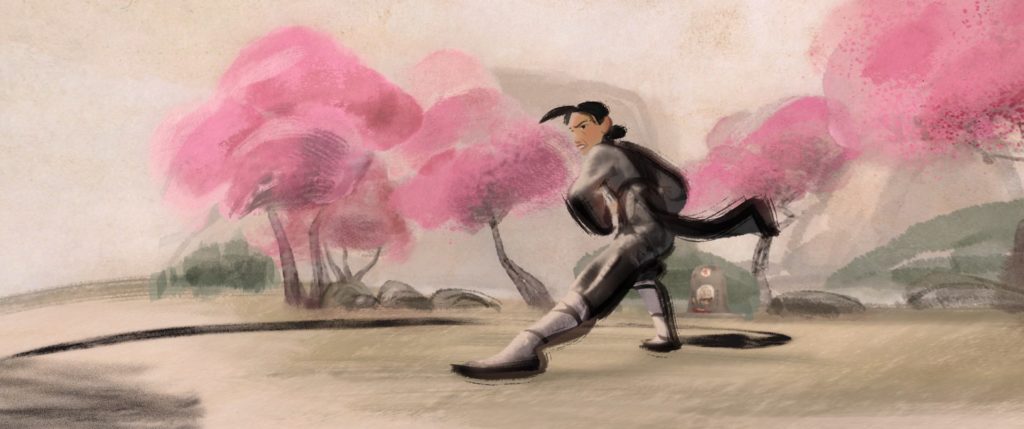
There’s a synergistic relationship between the shorts and the features: The shorts pull elements—buildings, characters, landscapes, creatures— from produced features such as Moana, Zootopia, and Big Hero 6, and the resulting shorts add to the palette from which future feature filmmakers can draw new designs, new software, and new stylistic elements. (The Short Circuit filmmakers even borrowed from each other.)
“The hope is always that the things we create will find their way down the line [to features],” says Huynh, who notes when some of Disney’s feature filmmakers saw the shorts, they said, “The hope is always that the things we create will find their way down the line [to features],” says Huynh, who notes when some of Disney’s feature filmmakers saw the shorts, they said, “‘We did that here? That’s so cool!’ They’re looking at this menu now to see what works for their stories.”
Lessons Learned
The shorts programs also provide a hands-on forum for artists to be trained in new tech, new software. For example, Meander animation developed for Menz’s Just a Thought found its way into the traditional CG platform of Ralph Breaks the Internet via artists who had been trained in it on the short.
“…everybody wants content, and that’s where shorts can be very beneficial and why they are coming more to the forefront”—ANDREW EREKSON
Erekson’s Marooned, about a grumpy robot trying to make it back to Earth with the help of a deactivated robot he discovers along the way, served a similar purpose. “We were testing a new pipeline at DreamWorks, different ways of doing things, trying to render faster,” Erekson says. “We wanted a 2D illustration to look like it was in a 3D world, so we were testing different techniques and tools to be able to get that look of painting illustration on geometry that would be inside that 3D landscape. Literally every frame in Marooned is a painting, because we had to hand-paint these textures and map them onto geometry. A lot of the effects in Marooned were then used to train new effects artists coming into the studio.”
DreamWorks kicked off its short film program in early 2017 when more than 25 employees, from established storyboard artists to newly hired production coordinators, pitched their concepts to a team of executives that included former President Chris deFaria, Head of Feature Film Development Jennifer Howell, Head of Feature Production Jill Hopper and Producer Jeff Hermann. The only guideline was for employees to submit an original idea and expand on the use of technology. Eight ideas were chosen to be produced, including Bird Karma (released in February 2018), Bilby (June 2018), Marooned (September 2019) and the upcoming To: Gerard.
When small studio teams are pulled together for shorts, it offers a host of additional benefits. Fellow studio artists and technicians from different departments who don’t typically cross paths on enormous features get to mix with each other and share expertise in unfamiliar aspects of the craft. They learn how to speak each other’s language and gain a broader understanding of each one’s contributions to the whole, which translates to more efficient problem solving and a more integrated crew on the huge projects.
“The small format of these shorts allows for a lot of magical collaborative things to happen,” says Character Technical Director Mitch Counsell, who directed the Short Circuit film Fetch. Additionally, shorts give studio artists a chance to show what they can do as writers and directors— and decision-makers. Given limited resources, catch-as-catch-can collaborators working around their responsibilities on features, and a tight schedule for delivery, the shorts test filmmakers’ leadership skills. “There is definitely an evolution in how talent is being developed,” says Nick Russell, head of Disney’s professional development program. “This sort of shorts program can give them an opportunity to grow as storytellers, as filmmakers, as employees. Those sorts of opportunities are how the industry has shifted.”
“The time creators spend in our department is kind of a quick education in the whole process,” says Spence. “Not only are they learning a lot, but we are learning about that creator, how they handle the challenge and the stress and the requirements of seeing their entire project through from beginning to end. There are lots of reasons why Cartoon Network makes shorts. One is proof of concept for the project, and another is proof of ability for the showrunner, the creator.”
